How to Buy a Backpacking Stove For Your Next Camping Adventure
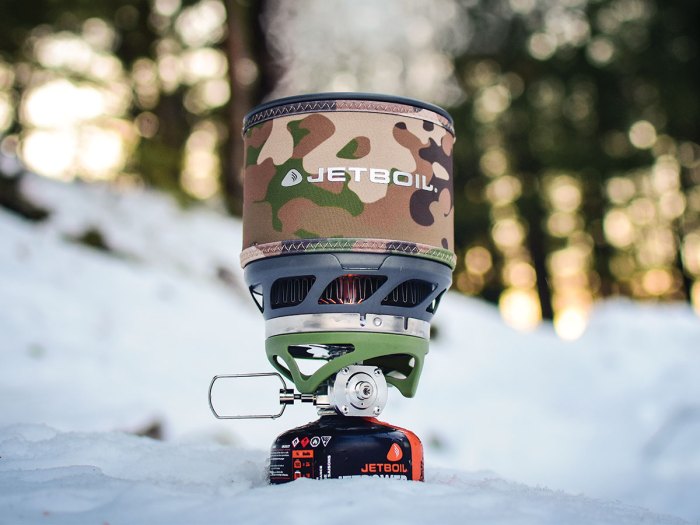
A lightweight backpacking stove provides a welcome hot drink and meal in the backcountry and might become critical gear if you must melt snow for water. Find the right stove for your adventures using these tips.
3 TYPES OF BACKPACKING STOVES
Backpacking stoves fall into one of three basic categories, according to the type of fuel they burn:
CANISTER STOVES burn isobutane-propane fuel in pressurized canisters and are popular for their simplicity, reliability, durability and power. Some are inexpensive, compact and ultralight. Designs range from tiny stoves that screw onto canisters to integrated systems.
Flame control and performance in wind vary and fall off sharply in subfreezing temperatures.
LIQUID-FUEL STOVES run on white gas and other fuels. A separate stove and fuel bottle require assembly, pressurizing and priming the burner.
Heavier and bulkier than canister stoves, they excel in subfreezing temperatures.
ALTERNATIVE-FUEL STOVES burn either solid fuel tablets or small pieces of wood. These stoves are popular with hikers for their low weight and simplicity, but they boil water and cook food slowly.
The BSA recommends you do not use liquid alcohol fuels, including isopropyl alcohol, denatured ethyl alcohol and ethanol. Use only fuels that are in accordance with the equipment manufacturer’s instructions. Do not modify equipment beyond its design limitations.
HOW TO CHOOSE A BACKPACKING STOVE
Canister stoves are widely popular and considered the most convenient for backpacking trips. Liquid-fuel stoves are often the choice of winter campers and mountaineers. And many thru-hikers prefer pocket-style stoves that take up little space in their already-stuffed packs.
Consider how you will use your camping stove, talk with your buddies to get their recommendations and check out a few of our favorites, shown on this page.
RECOMMENDED BACKPACKING STOVES
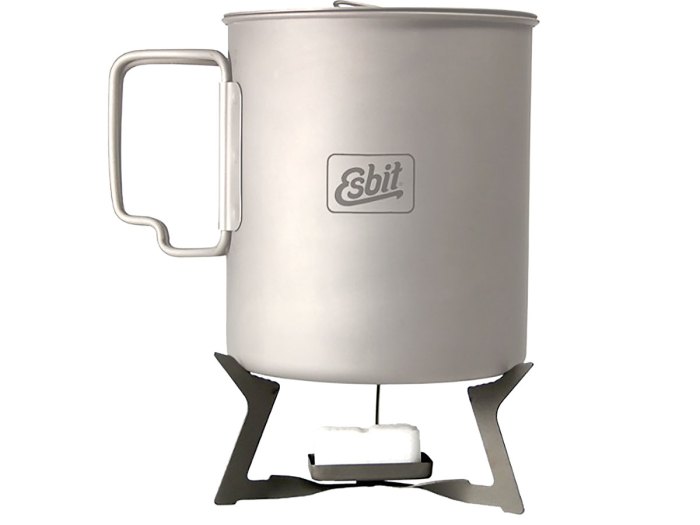
Few burners are simpler, cheaper or lighter than the ESBIT TITANIUM STOVE ($20, esbit.de). Its three folding legs open to suspend a small pot over a tiny tray where you light a solid fuel tablet (pot and fuel tablet purchased separately). Best if you’re going ultralight hiking; the stove lacks flame control and boils water slowly but reliably. 0.4 oz.
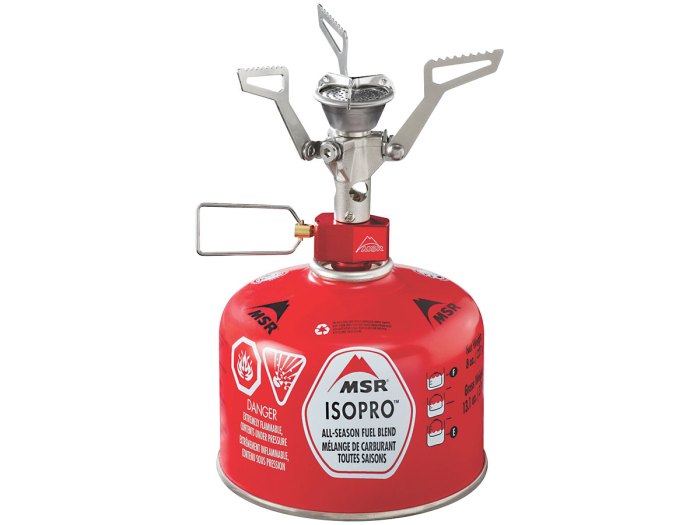
For simplicity, durability and price, it’s hard to beat the MSR POCKETROCKET 2 ($45, msrgear.com). Its folding support arms screw onto a canister and can handle a pot up to about 2.5 liters. It can boil a liter of water in just over 3 minutes, and the flame control won’t burn your noodles. Few stoves are lighter or more packable. 2.6 oz.
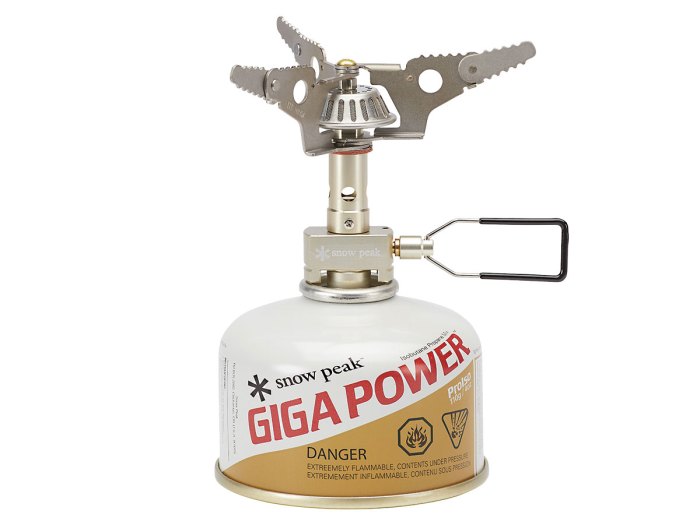
The SNOW PEAK LITEMAX TITANIUM STOVE ($60, snowpeak.com) offers the most power in the lightest, tiniest package. Made from titanium and coated aluminum, it has folding arms that pack small enough to close your fist around. When deployed, it can hold a small pot and quickly boil water. It also offers flame control. 2 oz.
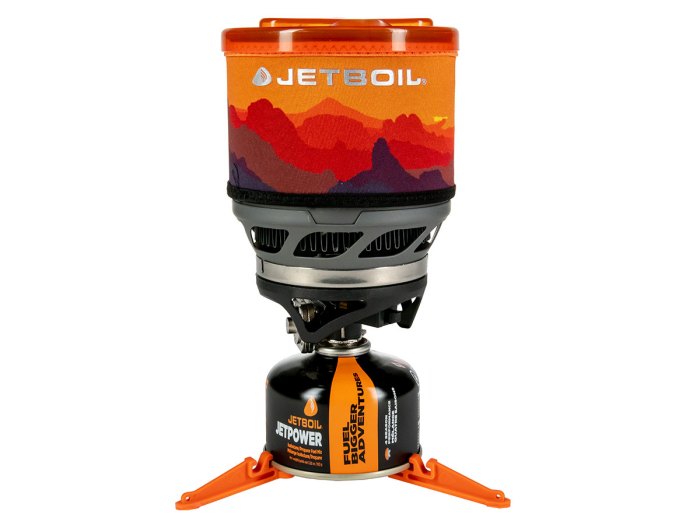
For backpackers seeking to step up performance in a cooking system that’s still reasonably light and compact, the JETBOIL MINIMO ($150, jetboil.johnsonoutdoors.com) integrates a 1-liter pot/cup with a burner and heat exchanger mounted atop a fuel canister. It has a push-button lighter, good power and flame control, and is twice as efficient as simpler burners (you carry less fuel weight). Bonus: In subfreezing temperatures, it has exceptional performance for a canister stove. 15 oz.
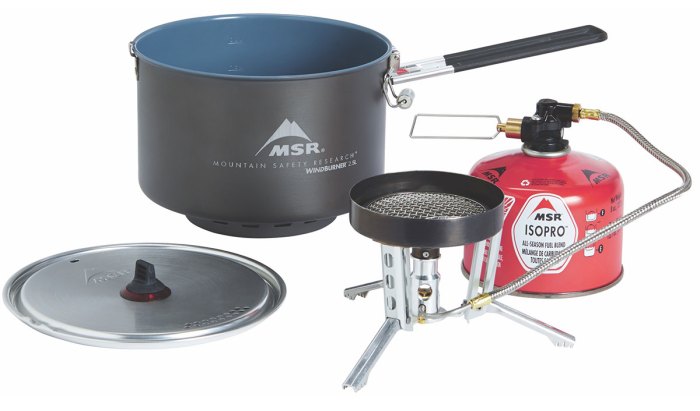
The MSR WINDBURNER GROUP STOVE SYSTEM ($200, msrgear.com) elevates efficiency to an art form. This all-in-one kit combines a 2 1⁄2-liter pot that sits securely atop an enclosed pressure-regulated burner, which connects to a canister via a fuel line. The ceramic-coated aluminum non-stick pot has a ring on the bottom that fits over the burner ring, centering itself while trapping heat. The design benefits include consistent heat output, a windproof flame with simmer control and the ability to boil a liter of water in about 6 minutes. 1 lb. 4 oz.
As with any flame, burning stoves consume oxygen. They also give off carbon monoxide, a colorless and odorless gas that can kill. Always cook in a well-ventilated place — not inside a completely closed tent or snow cave.
i love the Esbit pocket stove. it is a boss for under 15 dollars.
Where did you get a cool stove like that?!! I need one very badly, now that I heard about them!!!
Try a camping store; they are everywhere.
Just remember that the fuel tabs don’t have real long burn times and they don’t simmer.
There is an ultralight titanium stove for the esbit tabs that I think weighs under an ounce.
I bought one of the regular ones for an emergency kit. If all you have to do is boil water they work just fine.
MSR Dragonfly
I agree, MSR Dragonfly all the way.
My favorate is hexamine solid fule tablets
ps. – everyone should learn how to make a “pop-can” stove. It came in handy in a pinch…
But please remember to never use one on a scout outing. They’re not allowed in scouts according to the “Guide to Safe Scouting” as is any home-made liquid burning stove. Also do not use alchohol, auto gas, jet fuel or tiki torch fuel as a stove/fire burning source either. If you do you’re subject to disipline and not covered by the BSA insurance. The can stoves have been known to break down and cause injury.
BUT, homemade woodburning stoves ARE allowed
When has a can stove cause more of an injury than a wood fire or normal stove if anything its safer than other stoves because there is no pressurized liquids that can explode
There was an adult leader from my former (now defunct) troop who found out the problems with can stoves the hard way. It is not safer than a campfire or normal stove. He wound up catching his legs on fire and couldn’t smother it. Stop, drop, and role did nothing (and to add insult to injury, it was in a cow pasture and he rolled through some cow pies). Only when all of the fumes were burned up did the fire go out.
After 10 years as a survival instructor, international traveler and spending a lot of time with a pack on my back I have used many types of stoves. I highly recommend liquid fuel stoves over canister stoves except in very specific situation. I currently use a Primus stove and it is nearly indestructible. This stove burns “anything”, liquid fuels and canister fuel. It is completely field serviceable as well with a small tool that is included. These stoves tend to be on the expensive side but will outlast anything else out there.
Keep on Trekking,
Which Primus stove do you like?
MSR Dragonfly all the way !!!
I have been camping for 14 years and I recommend the whisperlite international. it burns most of your liquid fuels and diesal plus auto fuel.
i like using home made alcohol stoves from pop cans but sterno works in a pinch.
pop can stove, there cheap and great. run’em off anything
thank you
what is a good stove
Jetboil is a really good stove